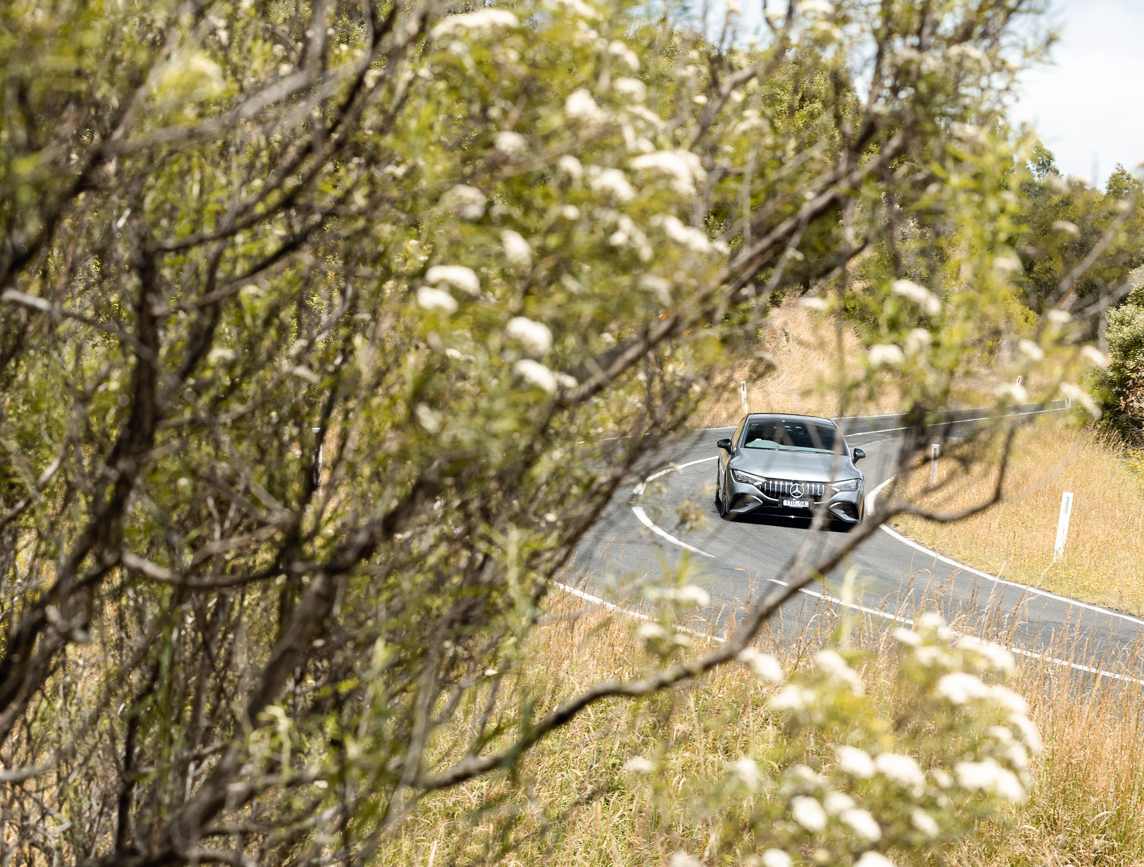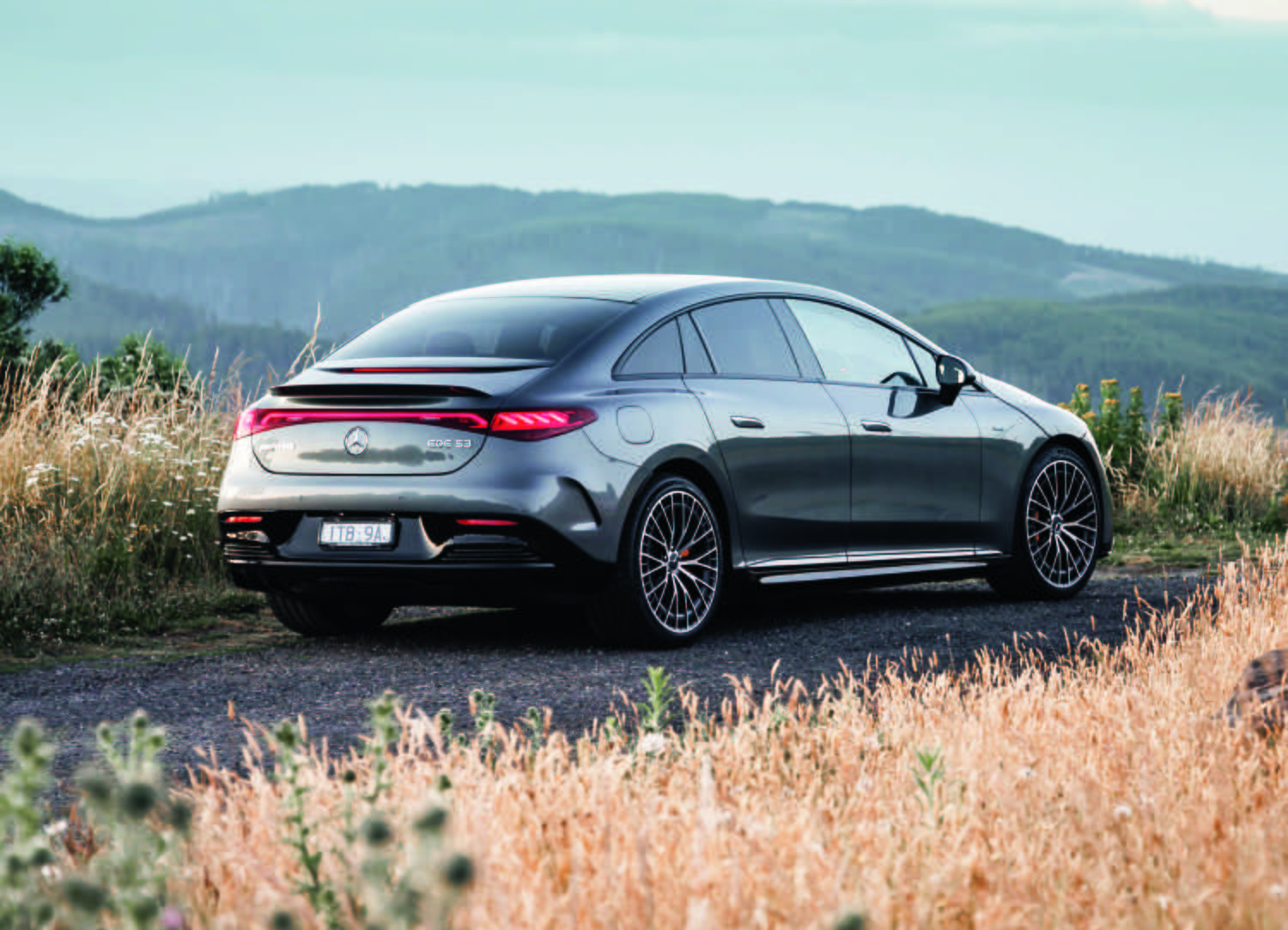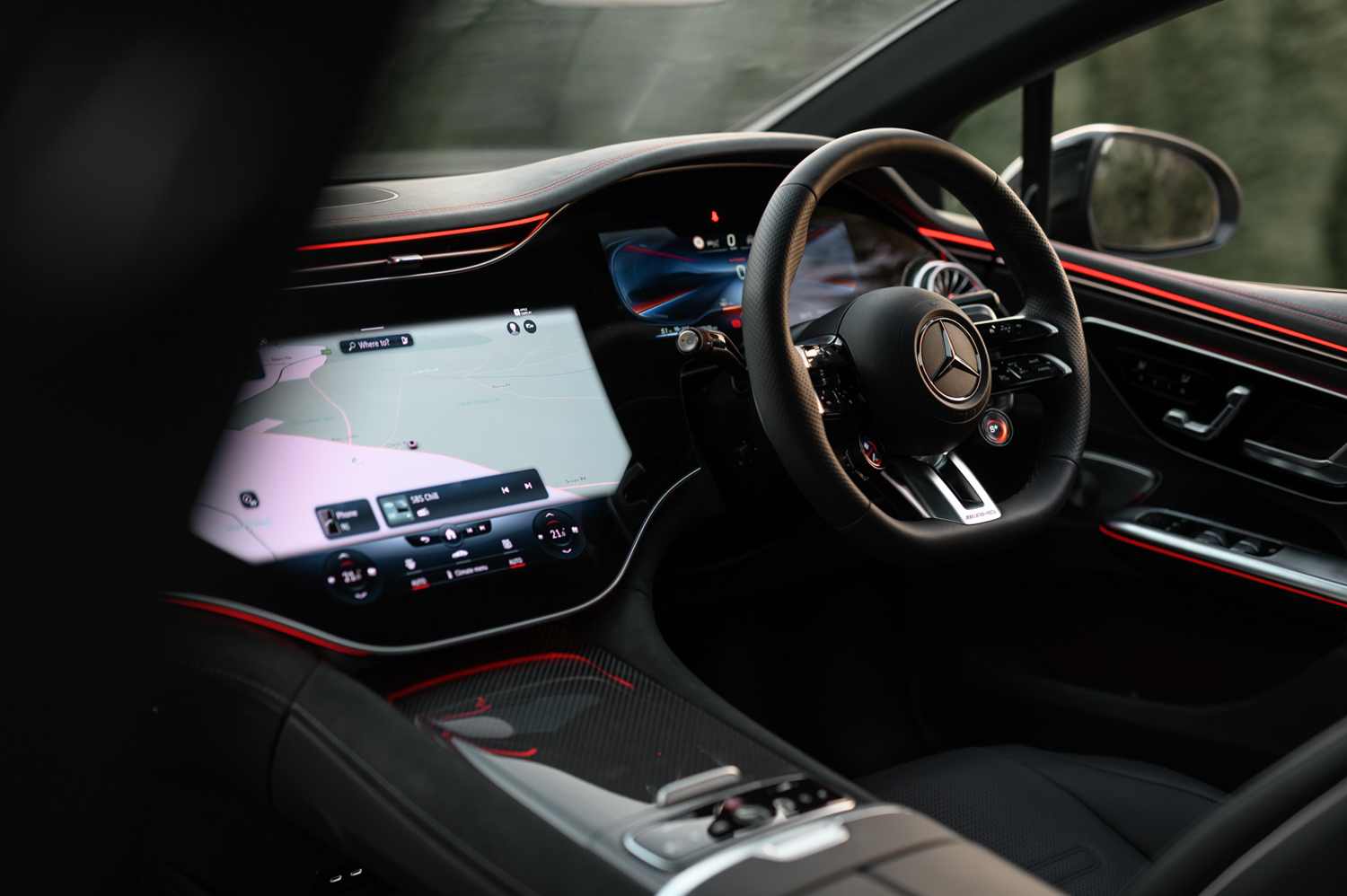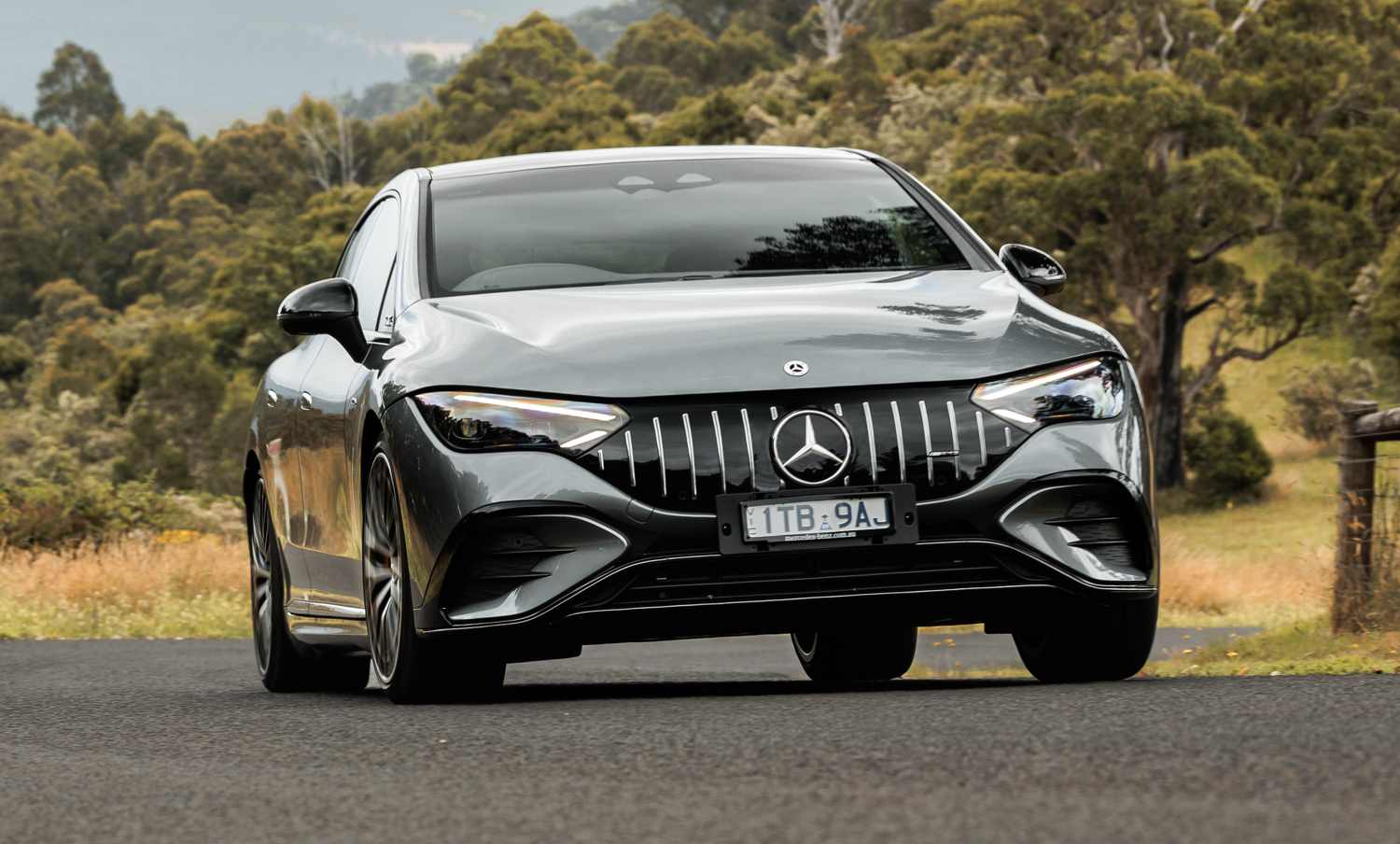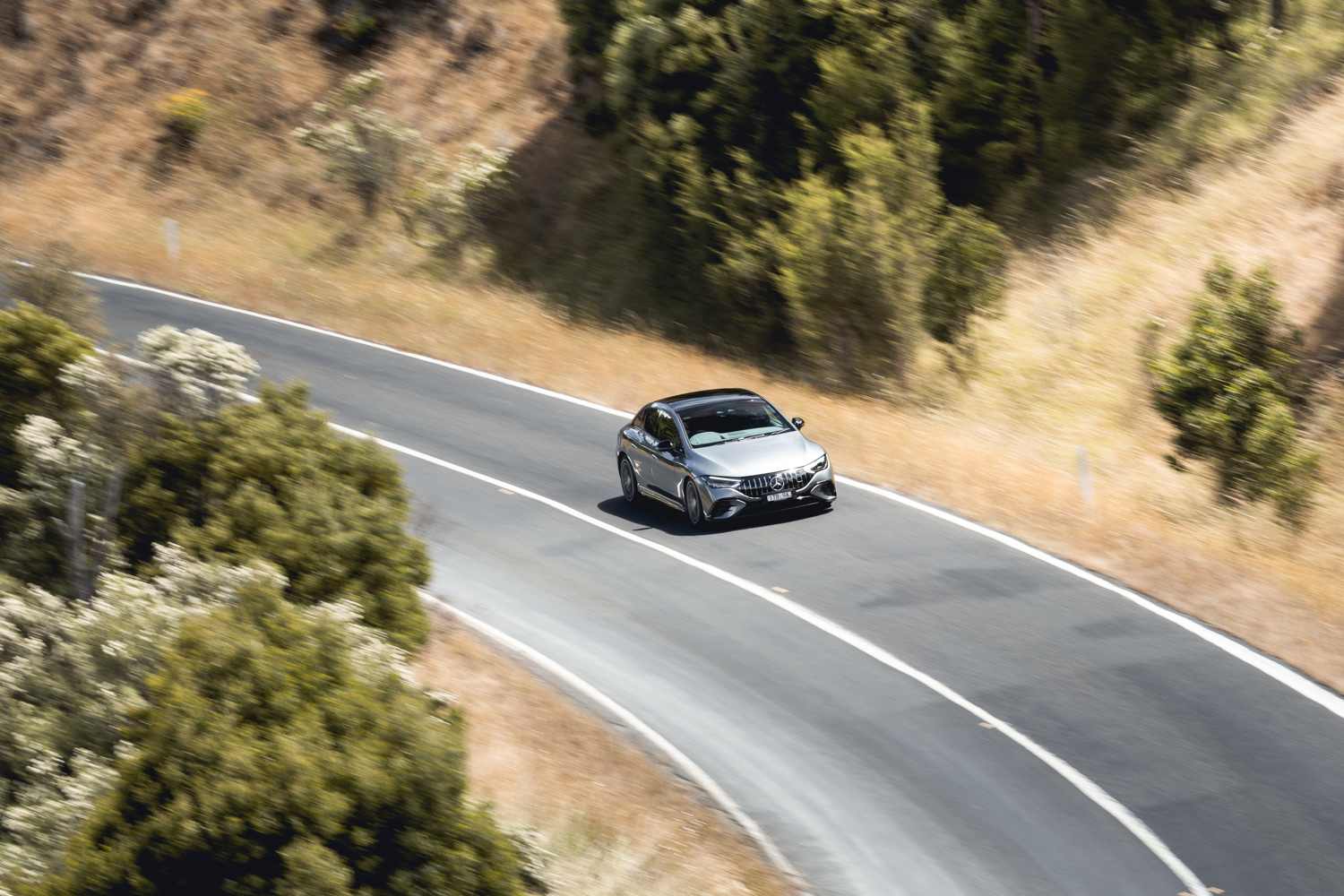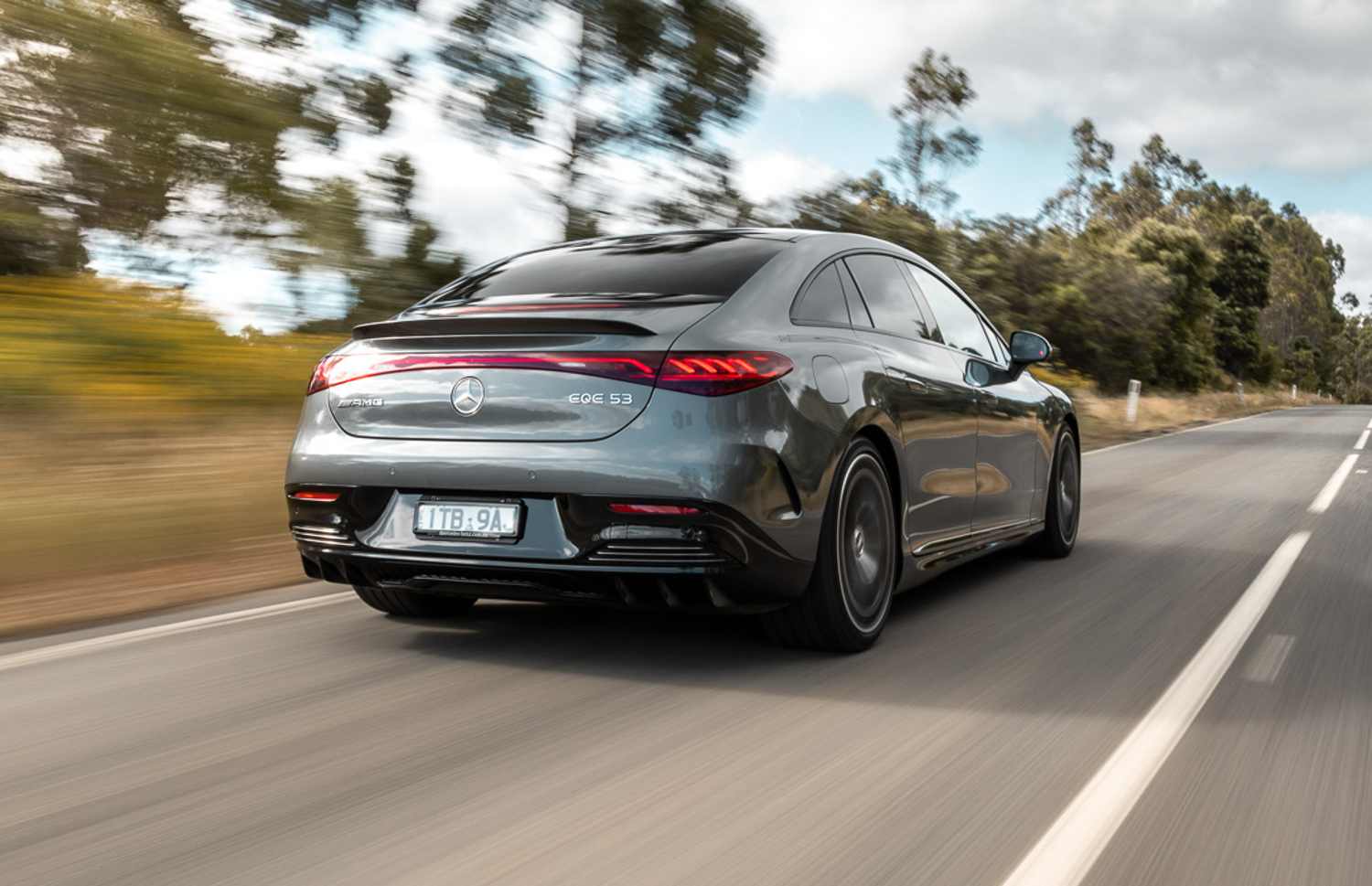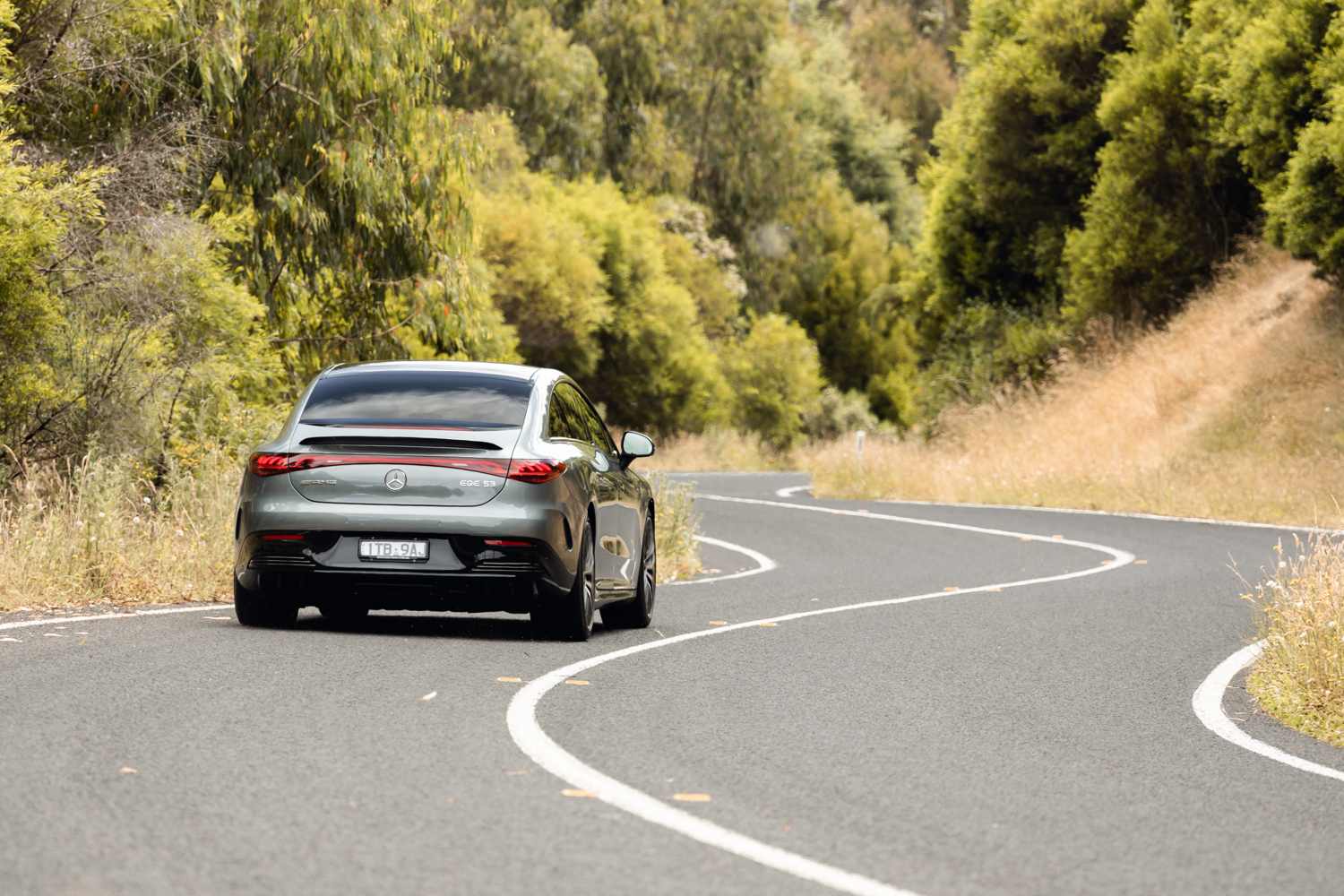Outputs of 460kW and 950Nm suggest that AMG’s new EQE EV sporting sedan is a serious weapon. Does it deliver in our experience driving it?
The launch for the Mercedes EQE range, including the range-topping EQE 53 that’s the focus of this review, included a pair of roads that I know well. Indeed, any driving enthusiast in Victoria would know these roads well. The problem is that the two roads, each approximately 10km in length, are connected by a tiny village whose residents and police force know that people like me like roads like these. A previous adventure on these roads was behind the bellowing twin-turbocharged V8 of an AMG GT R Pro and at a coffee stop at the abovementioned village I was admonished because, “I could hear you coming for miles”. Given the surprisingly generous speed limit on this tree-lined ribbon of tarmac, I doubt that I was outside the letter of the law for much or any of the road’s length, but the AMG just sounded guilty.
And that brings me to the silent advantage of the EQE 53. Despite the slimy late-autumn tarmac that’s strewn with leaf litter, I doubt that I’ve driven any slower today than the bone-dry run I had years ago in the GT R Pro, but thanks to the quietly spoken drivetrain of the EQE 53, I’ve not disturbed the peace. And thanks to the demure looks of the EQE, I’ve not raised an eyebrow.
The EQE has arrived in Australia with a three-model line-up, and it’s part of Mercedes-Benz’s plan to have eight distinct EV offerings by the end of the year. It’s worth noting that the EV expansion will eventually include an SUV variant of the EQE, so here we’re only referencing the sedan.
The EQE is spun off the same dedicated EV platform that was debuted by the flagship EQS. Though still a large car (especially so in terms of wheelbase and interior legroom), the EQE is significantly smaller than the EQS. As the naming convention suggests, the EQE is the electric equivalent of the E-class sedan, while the EQS plays the role of an EV S-class. At 4964mm in length, the EQE is 270mm shorter than the 5.2-metre EQS, but it sits on a wheelbase just 90mm shorter – 3120mm plays 3210mm for the EV limo. It’s also 15mm lower than the EQS, but is 35mm narrower at 1961mm. Compared to the current-generation E-class, the EQE is 181mm longer, 101mm wider and 57mm taller – all of which suggests that the next E-class will grow substantially.
The EQE range starts are $134,900 for the EQE 300, rises to $154,900 for the 350 and tops outs at $214,900 for the Mercedes-AMG EQE 53 4matic+ variant that we’re testing here. (Note that all pricing is exclusive of on-road costs.) The EQE 300 features an in-house designed and manufactured 89kWh lithium-ion battery pack that powers a six-phase permanently excited synchronous motor on the back axle. The motor makes 180kW and 550Nm, accelerating the EQE 300 to 100km/h in 7.3 seconds. According to the WLTP testing protocol, the EQE 300 boasts a range of 508km – no doubt helped by the 0.22Cd that is second-only to the astonishingly low 0.20 of the EQS.
Equipment highlights include, but are not limited to, the latest-gen MBUX multimedia suite including MBUX Navigation Premium, Burmester surround sound, heated and electrically adjustable front seats, panoramic sliding sunroof, AMG Line exterior body styling and 20-inch AMG wheels. On the safety front, the EQE 300 boasts 10 airbags, lane-keep assist, lane centring assist, adaptive cruise control, blind-spot monitoring, autonomous auto braking with intersection support, rear cross-traffic alert, automatic parking and 360-degree camera.
The $20,000 step up to the EQE 350 4matic brings an electric motor on the front axle, and the corresponding all-wheel-drive system implied by the 4matic suffix on the badge. Power and torque rise to a combined 215kW and a seriously chunky 765Nm, which combines with the all-wheel-drive traction to reduce the claimed 0-100km/h time by a full second – now 6.3. As it does with an ICE vehicle, the extra performance comes with a range penalty, and the EQE 350 scores a WLTP range of 462km – still a decent number. Visually the 350 is only distinguished by the addition of a discreet boot spoiler.
The $214,900 EQE 53 AMG variant sits well below the $272,000 of the current-generation E63 S super sedan, yet it offers similar outright performance. Common with the EQE 350, the AMG 53 variant uses a 90.6kWh battery pack, and total outputs for the dual-motor 53 are a staggering 460kW and 950Nm. AMG is keen to promote the EQE 53 4Matic+ as a sporting executive sedan, and the torque split of those outputs is a distinctly rear-biased 36:64. The 0-100km/h benchmark is dispatched in as little as 3.5 seconds, top speed is limited to 220km/h and the WLTP testing regime suggests a real-world range of 435km. If these numbers aren’t big enough for you, $7400 buys the AMG Dynamic Plus package which brings peak outputs to a ludicrous 505kW and 1000Nm. Race Start launch control is added, dropping the 0-100km/h sprint to just 3.3 seconds, while top speed has been massaged to 240km/h. Your $7400 also buys you the AMG Track Pace app and new AMG driving sounds. The EQE 53 4Matic+ that we tested was in standard 460kW/950Nm trim, but it was never found wanting for urge.
Beyond the extra power and torque, and sportier dynamic tune, the 53 brings rear-steering, Airmatic suspension, AMG Performance steering wheel, heated and cooled front seats finished in Nappa Leather, red brake calipers, and Guard 360 Vehicle Protection Plus. Air suspension is a $3800 option on the other EQE models, and you can option carbon-ceramic front brakes on the 53 for $9100.
Gliding through Melbourne’s outer suburbs to the interesting roads mentioned at the start, the EQE feels just like the EQS – imperious, luxurious but with an undercurrent of dynamic tension thanks to a ride quality that maintains a sporting edge. It never develops into anything crashy or annoying, but nor will it soothe to numbness. It’s a trait that I don’t mind as it suggests that the EQE 53 might be up for more than just commuting. As with many EVs, you can adjust the level of brake regeneration, but I was never quite happy with the brake feel in normal, gentle driving. There’s a very slight disconnect felt through the pedal when regen gives way to friction braking. Over two days of driving I got better at managing the blurred line but I think that other brands (Porsche with its Taycan) do it better.
Ultimately the AMG EV can’t quite match the dynamic ability of the Porsche either, but that’s a criticism that is true of every EV on the market. On the tight, damp and slippery roads mentioned at the top, the EQE 53 feels planted and largely neutral in its behaviour. Despite the weight (2525kg), the 53 is remarkably resistant to understeer – in fact, when I learnt of the weight, I was shocked as I’d have guessed 2000-2100kg. The steering is faster than I initially expected, and that’s perhaps a feeling generated by the rear-steer. But once into a corner, the AMG sits very flat but still provides some sense of how hard each corner of the car is working.
With back-of-the-hand knowledge of the roads and increasing confidence in the EQE, harder cornering, especially exploiting the instantaneous thump from the motors, brings that rear-drive balance into play. I’m not going to claim that I was sliding the EQE like one might an E46 M3, but you can certainly feel the torque distribution, and you can use it to tighten your line mid corner or wiggle a little on exit.
Ultimately, though, the EQE doesn’t feel like a traditional AMG thunder sedan, which to be fair, it’s not billed as. And it’s not just because of the lack of aural fireworks which have long defined AMG products. It’s a character thing that will be a hard nut for any EV to crack. But the automotive industry is very clever at delivering what everyone wants, so it feels like a matter of time.




